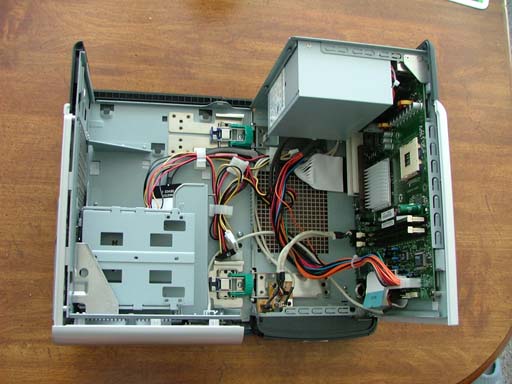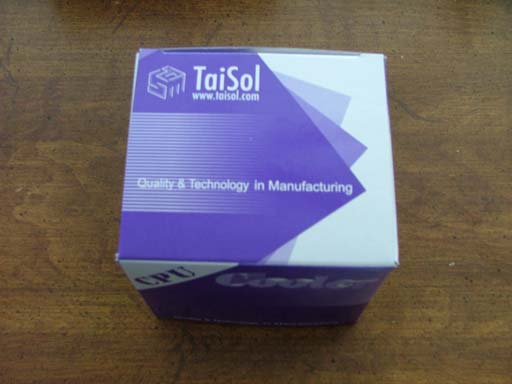Specifications:
It's interesting to see that FIC included an Intel motherboard instead of one of its own. Not surprisingly, the Intel board was bereft of any overclocking features. The control in the BIOS is pretty much limited to choosing boot options, the date/time, and some other miscellaneous features, none of which needed alteration.
From FIC's Site:


In addition to its sleek lines and break from the traditional SFF look, the Condor is also very functional. The case opens in a clamshell design with the motherboard and PSU mounted on the right hand side and the drives mounted to the left, which makes installation very simple. FIC has put some work into the cable management of this system as well, by routing many cables through cable ties, and some even behind the motherboard. It is worthy to note that the secondary IDE connector comes out from behind the motherboard and overlaps the primary IDE connector. This makes plugging an IDE cable into the primary port difficult, and also forces the cable to come in at an odd angle, even to be plugged in. This is oddly suggestive of there being too much engineering in this case.
The massive southbridge heatsink located below the P4 socket can be seen in the picture above. The picture also shows that this board has only two RAM slots, although still accommodating up to 2 GB of PC3200 (DDR400) RAM. The Condor package includes a CPU heatsink/fan (HSF) combination from TaiSol, as shown below.

The Taisol heatsink is made entirely of aluminum with a generic silicone thermal paste pre-applied to the bottom. The HSF also comes with a shroud which is angles to draw in air from the vent at the bottom of the case and expel it through the top vent. The included fan seems underpowered for the hot beast that is the prescott P4, and the base of the heatsink still shows mill marks. TWL did not expect the HSF to fare well, but once in Windows, it performs surprisingly well for its construction. It is obvious that FIC did a fair amount of testing and engineering for this setup. While TechwareLabs has access to several types of P4 heatsinks, none would fit or work as well as the TaiSol, and the included TaiSol HSF remains in the case today.
On to initial setup and items included.

